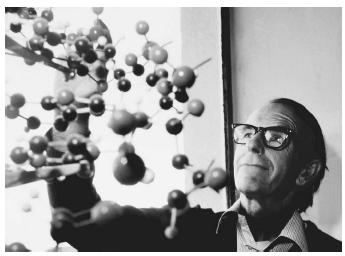
Cesium may bond to fluorine with inner shell electrons at high pressures.
We all learn in introductory chemistry that valence electrons are the only electrons capable of bond formation. But, Scientific American reports on a paper published in the September 23rd issue of Nature Chemistry that predicts that inner shell electrons might form a chemical bond under the right conditions. In the paper, Mao-sheng Miao calculates that at very high pressures (over 30 gigapascals) cesium’s inner electrons will be able to bond to fluorine, forming at least two stable compounds (CsF3 and CsF5).
Cesium, all the way on the left side of the periodic table, has one superfluous electron in its outer, or sixth shell. Fluorine, on the other hand, is toward the far right of the table, just next to the column of noble gases with completely full shells (which is why noble gases are notoriously unreactive—they have little incentive to gain or lose electrons) and is one electron short of a full outer shell. “Under normal pressure, cesium gives an electron completely to fluorine and they bind together,” Miao says. “But under high pressure, the electrons from cesium’s inner shells start to form molecules with fluorine.”
Miao identified two compounds that could form and remain stable up to very high pressures: cesium trifluoride (CsF3), where cesium has shared its one valence electron and two from an inner shell with three fluorine atoms, and cesium pentafluoride (CsF5), where cesium shares its valence electron and four inner-shell electrons to five fluorine atoms.
The article continues, saying that these compounds have yet to be generated in lab thought it should be possible as the require pressures can be generated by modern equipment.
